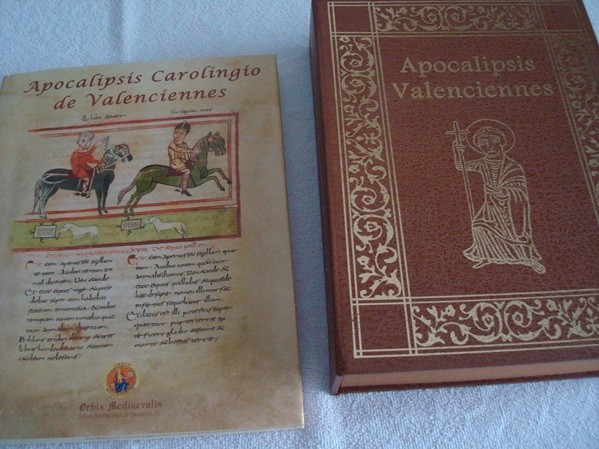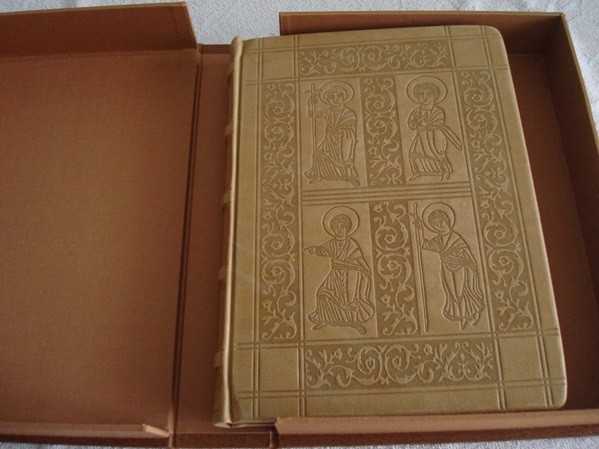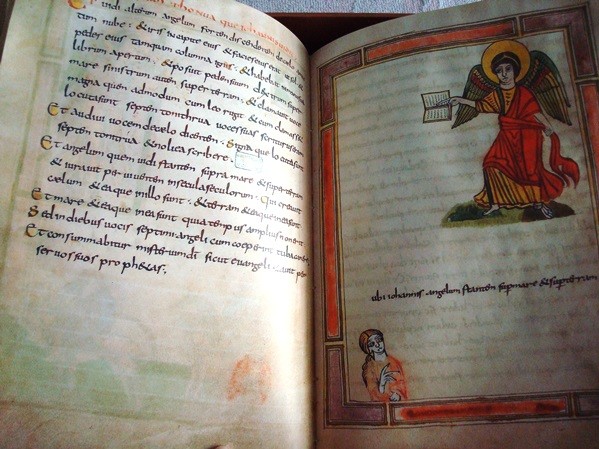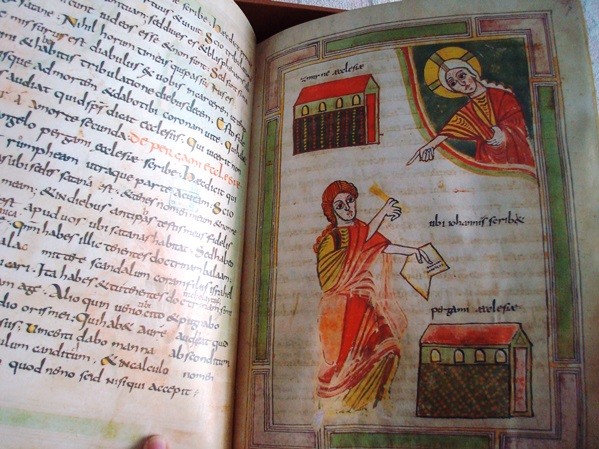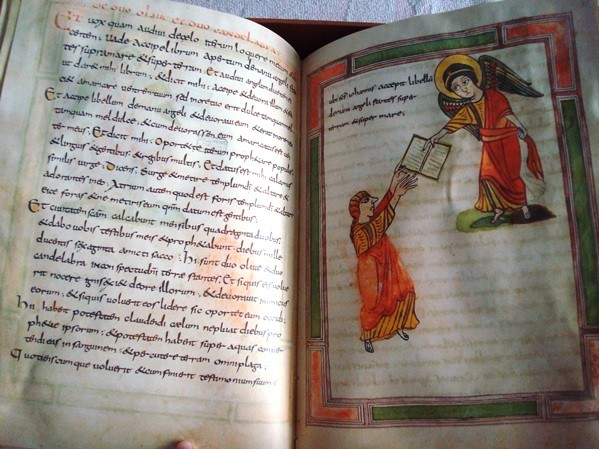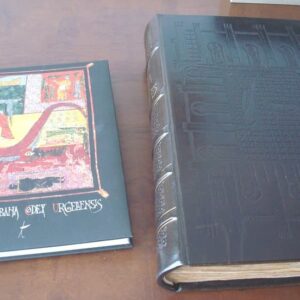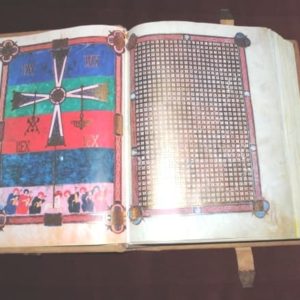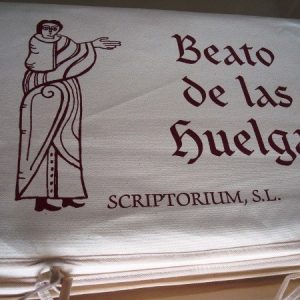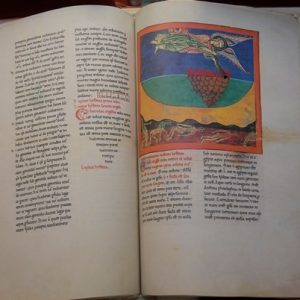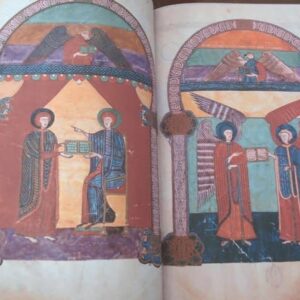Description
Since the beginning of the Christian era and during the Middle Ages, the text of Revelation inspired and enhanced the imagination of artists, due to the wealth of his prophetic visions and the power of its symbols.
The Apocalypse of Valenciennes includes the first remains of complete cycles of biblical illustrations. The pages of this Revelation are enriched with 39 miniatures accent colors, always placed next to the text. Each miniature is framed or interwoven with geometric elements as well as short snippets of text that allow readers to immerse themselves in the drama of the story and meditate on it. The manuscript opens with a portrait of John (fol.4). The evangelist imperiously demands the reader’s attention with his eyes and with his right hand over his heart, while his mouth seems to echo the first words of the text.
The illustrations of the Apocalypse of Valenciennes derived from a series of images that were taken from Rome to the monastery of Wearmouth-Jarrow by Abbot Benito Bischoff in a trip he made in the year 676.
While “Otoltus” is the name of the scribe of the Apocalypse of Valenciennes, is not known exactly their place of origin. His illustrations can be compared stylistically with thumbnails of a contemporary codex of the Gospels, from Central Rhine, and also with illustrations of a manuscript of “Carmen Paschale” of Sedulius, a native of Flanders. This makes the place of origin of the Apocalypse of Valenciennes is controversial among specialists.
This controversy in Spain acquires a special significance, as the Apocalypse of Valenciennes is, without any doubt, the cradle of the miniatures of the Blessed Liebana. Experts in the field agree in saying that this work is the origin of European apocalyptic image, and more specifically of the Iberian Peninsula.
Subsequent to the development in the ninth century miniatures in this codex was incorporated into the pages 1-3 of the ark history of Oviedo and relics containing enumerating the places which passed the ark: Jerusalem, Africa, Cartagena, Toledo and Asturias. This text dates from the eleventh century, and the relationship of the relics listing is the official version that the cathedral of Oviedo gives to the pilgrims. The importance of the Apocalypse of Valenciennes is that it shows that both the history and the tradition of relics predate Pelayo, although the later story that takes Pelayo is supported by the text of this codex.
Date of the original codex: first quarter of the 9th century.
Presently kept in the Valenciennes Municipal Library, sign. Ms. 0099.
Widely accepted origin: Central Rhine. Written in Latin.
Binding facsimile edition in dry-stamped cowhide leather, format 21.5 x 28.8 cm. 84 pages containing 39 thumbnails to full page.
Edition made in 2009, limited to 995 copies numbered and notarially authenticated.
Presented the facsimile in a closed case, book type with flat spine, format 24 x 32.3 x 6.3 cm.
Bilingual Spanish and English study book by Dr. Peter Klein, which also includes the translation of the Latin text into Spanish. Hardcover bound with illustrated cover, guide tape, format 25 x 32 cm. 220 pages.
If he is a collector of the Blesseds of Liébana, this Apocalypse is a fundamental piece in it, now with an exceptional price and for a very limited time.
Shipping by the buyer, upon request and destination. Ask us any questions and facsimile or any other item that is looking for.




